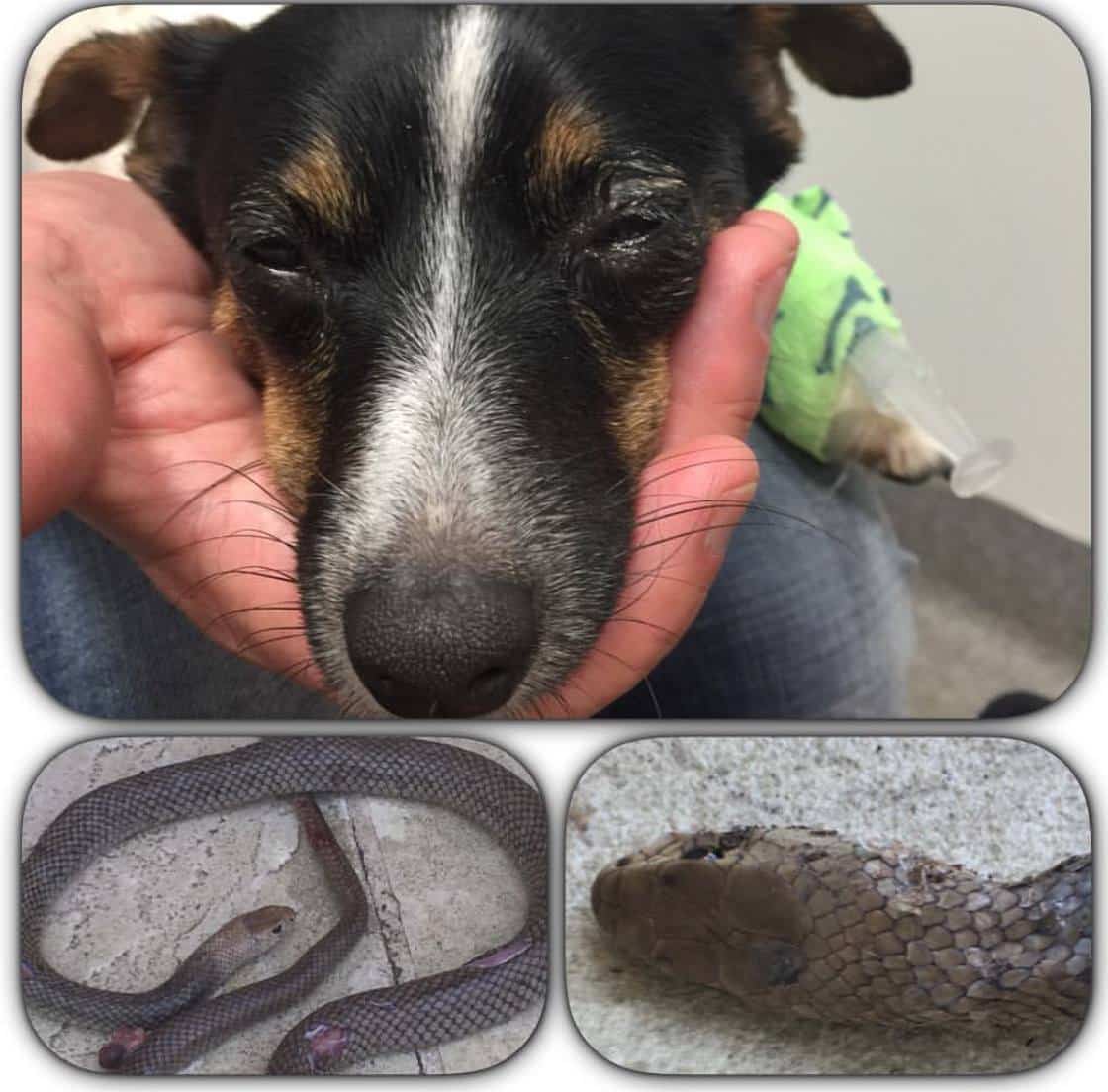I would like to take a little time to talk about snakes. With the weather having warmed up it is the time of year that more snakes are out and about- approximately October to April. Unfortunately, we are seeing numerous cases in our local veterinary hospitals and up the coast. While instinctively snakes will avoid us, at times this is not possible or our pet’s may have a tendency to harass them. Over half the snakes in our area are venomous with the Elapids or Elapidae (front-fanged) family being the most common and life threatening. Some rate as the most venomous snakes in the world.
The most common species seen to envenomate our dogs and cats in Australia are brown snakes, tiger snakes and red-bellied black snakes. Snake venom contains a cocktail of potent toxic enzymes affecting multiple systems such as the muscles, brain, heart, kidneys and the body’s ability to clot blood- a coagulopathy.

If your dog or cat has been bitten, it is usually within the first 1-24 hours that clinical signs will show. There may be an initial collapse which they appear to recover from but things are likely to decline. Other early signs may include vomiting, diarrhoea, drooling or muscle tremors. Once progressed, we commonly see a rapidly ascending paralysis. This starts with wobbliness, then loss of use to their hindlimbs which progresses up the body and also affects their ability to breath. They may lose the ability to blink and have dilated pupils. Due to the coagulopathy, they may also have pale gums, be bleeding from the nose or mouth, or very concerningly, be bleeding internally into their chest.

Seeking veterinary attention early is vital, please call ahead if possible so we can plan for your arrival. Your vet may recommend a variety of things depending on the circumstances and your pets’ condition. They may first want to run diagnostic tests such as blood or urine testing to rule out other possibilities and asses your pet’s clinical status. If a snake bite is suspected they will recommend the administration of snake anti-venom. There are different types of anti-venom depending on the species of snake. Identification of the snake helps to decide which treatment to use but is not imperative. Do not put yourself in danger or delay veterinary attention in an attempt to do so. Your pet is likely to remain in hospital for a period of days but it can take a few weeks for them to fully recover.
The severity of envenomation and therefore the prognosis will differ between affected pets due to factors such as the species of snake, the amount of venom injected and the time between bite and administration of anti-serum. Some pets may require critical treatments such as oxygen therapy, blood transfusions or mechanical ventilation for survival. Others may experience ongoing issues such as renal disease. It can be a complex and emotional time for all involved.

Remember:
- When taking your pets hiking, keep them on a leash and stay on open paths and avoid tall grass and rocks
- Keep your backyard tidy clearing undergrowth and mowing the lawn
- Clean up any spilled food, fruit or bird seed. This attracts rodents which attracts snakes
- Do not let your pet sniff dead snakes- they can still have venomous fangs
- Do not attempt to capture or kill the snake. It is extremely dangerous and they are a protected species by law. Contact a local snake catcher and follow their instructions.
If you suspect your pet has been bitten:
- Remain calm
- Try to keep your pet still and low stress to prevent spreading of the venom, carry them if possible
- Do NOT wash the bite wound, apply a tourniquet, apply ice, alcohol or bleed the wound.
- Do NOT offer any food or water
- Directly seek veterinary attention ASAP for the best chance of survival, even if your pet appears to have recovered or it is the middle of the night.

Survival for pets who obtain veterinary treatment is seen between 75-91%. Unfortunately, without treatment we see a significant decrease in prognosis with survival of dogs down to 35% and cats 66%. Together, let’s help keep our pets safe this season.






